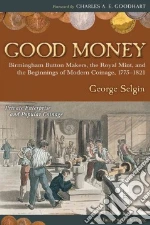 Libri di George Selgin su Unilibro.it
)
Libri di George Selgin su Unilibro.it
)
|
|
2021 |
 Title :
La deflazione buona. La diminuzione dei prezzi in una economia che cresce
Title :
La deflazione buona. La diminuzione dei prezzi in una economia che cresceAuthor: Selgin George Publisher: IBL Libri Non molto tempo fa, numerosi economisti erano convinti che la politica monetaria dovesse porsi come obiettivo il raggiungimento del pieno impiego. Dopo avere accettato l'esistenza di un tasso 'naturale' di disoccupazione, diversi Paesi hanno successivamente spinto le rispettive banche centrali a limitare le fluttuazioni del livello generale dei prezzi. Ma quali regole occorre seguire per governare le dinamiche legate ai prezzi? E la deflazione va sempre considerata negativamente? Per George Selgin, mentre la deflazione è un fenomeno da evitare quando indica un calo generale dei consumi, una deflazione che riflette solo miglioramenti generali della produttività o un declino generale dei costi unitari di produzione dei beni finali non è né motivo di allarme né prova della necessità di ulteriori 'adattamenti' monetari. I prezzi dovrebbero quindi essere lasciati liberi di fluttuare in risposta a cambiamenti nei costi unitari di produzione dei beni. € 10,00
|
|
|
1918 |
 Title :
Financial Stability Without Central Banks
Title :
Financial Stability Without Central BanksAuthor: Selgin George, Bédard Mathieu (CON), Dowd Kevin (CON) Publisher: Inst of Economic Affairs € 14,00
|
|
|
1917 |
 Title :
Money
Title :
MoneyAuthor: Selgin George Publisher: Cato Inst € 22,30
|
|
|
1911 |
 Title :
Good Money
Title :
Good MoneyAuthor: Selgin George, Goodhart Charles A. E. (FRW) Publisher: Independent Inst A fascinating story of the important yet virtually unknown episode in the history of money, this history chronicles the British manufacturers' challenge to the Crown's monopoly on coinage. In the 1780s, when the Industrial Revolution was gathering momentum, the Royal Mint failed to produce enough small-denomination coinage for factory owners to pay their workers. As the currency shortage threatened to derail industrial progress, manufacturers began to mint custom-made coins, called ?tradesman's tokens,” which served as the nation's most popular currency for wages and retail sales until 1821, when the Crown outlawed all moneys except its own. This book not only examines the crucial role of private coinage in fueling Great Britain's Industrial Revolution, but also sheds light on contemporary private-sector alternatives to government-issued money, such as digital monies, cash cards, electronic funds transfer, and?outside of the United States?spontaneous ?dollarization.” € 23,20
|